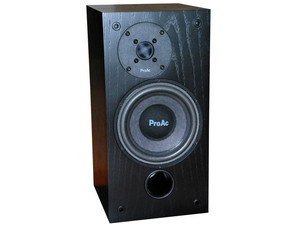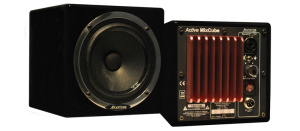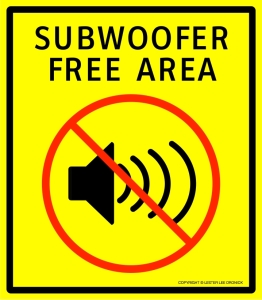To build the first version of my mix studio, I knew the priority would have to be monitoring. This means great speakers, the best acoustics possible, and excellent A/D conversion. There were a few big questions at the outset, such as whether or not to do analog summing, and if the budget would allow for a second pair of monitors on day one.
Picking out the interface for the mix room was the hardest part. How many channels? Go for a super high-end two-channel D/A and sum inside the computer, or get something with more outputs and have the option of analog summing and integrating outboard gear? If going for a multi-output interface, how many outputs? 8? 16? 32?
And what about controlling monitor levels? Some boxes have a volume knob on them, while others don’t. Do I want to budget for a dedicated monitor controller on day one, or do that in a later upgrade? As an additional concern, what happens if I want to do a quick overdub in the mixing room? Should I get something with at least a basic built in preamp and DI, or hook up an outboard pre if that becomes necessary?
Enough introductions, let’s get to the gear!
ProAc Studio 100

Sound comes out here.
I sometimes research things to the point of mental breakdown, but in the case of the monitors I did none at all. In NYC, I had the good fortune to work briefly at The Looking Glass studios, where I heard my first pair of ProAc speakers. I’ve had a handful of experiences in my life where a piece of gear really spins my head, and this was one of them. There was just something about the clarity and transparency of them that just seemed right. I found out that not only are they pleasant to listen to, they have a reputation for translating extremely well.
Knowing that no matter what speakers I bought, there would be a period of really learning them, I decided to skip researching the alternatives and focus on getting myself some ProAcs. I knew however, there was one big catch: the power amp. Like most home studio folks these days, I’ve been working on powered monitors for years. These guys would require a separate amp, and not just any old amp–a really good one, most commonly a Bryston. So, realizing that these expensive speakers require an amp nearly twice the price, I called up Chris at Vintage King LA to find out what my options were. Was there an option other than the Bryston that would serve me well until I could afford it? The answer was simple: no. Better to find a used one. Astonishingly, while we were on the phone I discovered that one of his colleagues was selling his personal Bryston 4BST at a great price. I got in the car.
The first listen (via an old computer and an Apogee One) was nothing short of staggering. I streamed the song “Rikki Don’t Lose That Number,” via Spotify. It’s a song I’ve certainly heard a thousand times, but right there streaming an mp3 in an untreated room I heard a part in the arrangement I’d never heard before. Ok, still lots of work to do, but an auspicious beginning for sure! My next shopping trip was to Lowe’s where I purchased a couple packages of Roxul Safe n’ Sound, an insulation commonly used to control reflections and absorb low frequencies. I didn’t know exactly what sort of absorbers I was going to make, but I knew I was going to need a lot of them. (More on the room treatment in an upcoming post!)
To Sub Or Not To Sub
I’ve never been into using subwoofers. The main reason is that most rooms I’ve worked in have a hard enough time handling the bass from standard nearfield monitors. I’ve worked on both 8″ and 6″ drivers, and in either case I’ve found that the biggest improvements to the bottom of my mixes has come from improving my listening/feeling skills in the low part of the spectrum, and controlling bass frequencies in the room. If you can get the lows to sound clear and balanced on nearfields, my experience is that they’ll sound super powerful on the hyped bottom of a big system.
That said, I read a few posts where ProAc owners felt strongly that the studio 100s did not go down low enough for sub-heavy music, so I figured it was worth a shot, even though I suspected that the room I was working in was too small to handle the low frequencies of a sub. Danny at Westlake Pro recommended the JBL LSR310 as a good-quality inexpensive option. I warned him that I’d probably be returning it, and took it home.
I plugged it into the mono output of my monitor controller, and it only took a few minutes to realize that it was making the work I’d done to control the low frequency acoustics of my room pointless, and turning the bottom into chaos.
Avantone Mixcube

Feel the midrange, baby.
I remember the first time I heard an Auratone speaker, many years ago. While working on a record at a great studio in Westchester New York, the engineer pushed a button and suddenly the sound was coming out of a single small speaker placed in the center of the console’s meter bridge. “What’s that?” I asked. “The truth,” he replied.
His point, of course, was that if the song doesn’t sound good coming out of a small speaker in mono, then it doesn’t sound good. Weird things happen when you get rid of all the highest and lowest frequencies, and collapse a stereo mix down to mono. Prominent sounds can disappear, vocal levels can change dramatically, and sounds you thought were smooth enough suddenly sound like they’re poking you in the ear with a sharp stick.
The Avantone Mixcubes are a modern take on the now unavailable Auratones. It’s amazing to listen to your mix minus all of the highest and lowest frequencies. Problems with vocal levels, and competing or harsh midrange frequenices jump to the forefront in a way you just can’t miss. I’m finding that they’re particularly useful for doing final passes of vocal automation. They’ll also let you know if your bass is all sub. Unless the bass has some presence in the 200-500hz range, it just disappears. If you’re only mixing dance music meant to be played on giant systems, these will be of limited use to you. Otherwise, you should consider getting some or stealing Michael Brauer’s boombox.
Ultrasone Pro 750
I’ve had these headphones for years, but I’d be remiss not to mention them. I picked them out at Dale Pro Audio in NYC after sitting at their headphone demo station for a while. The demo CD had a variety of contemporary pop and rock tracks, plus some remastered late Beatles songs. To my ears, the Beatles songs were the only ones in which the highest frequencies sounded beautiful. Everything else sounded harsh and nasty by comparison. I figured that level of unforgiving detail would serve me well.
What I didn’t understand for a while was how useful they were for checking low frequencies. I make most of my bass decisions on the monitors, but always make a few final tweaks in the 750s. The thing it took me a while to learn with these headphones was not to make midrange adjustments in them. The mids always sound very clear and forward, so if I judge vocal levels (for example) I’ll mix them too low.
Antelope Orion 32

How they fit so many digitizing elves/analoging gnomes into this box is a mystery to me.
This is where my remark about bewildering apples-to-oranges comparisons from the previous article came into play the most. Not only were the specifications and features of the units I was considering all different, but each one would affect other gear purchases. In addition to the Antelope, the Lynx Hilo (a high end two-channel unit), Prism Orpheus/Titan (both eight-channel units with four preamps), UA Apollo 16 (a 16 in/out unit with a built in UAD Quad card), and Apogee Symphony (a modular system with flexible and expandable I/O) were all strong contenders. I ruled out the Hilo, deciding that I didn’t want to be limited to two channels of I/O, as great sounding as they might be.
I came very close to pulling the trigger on a used Orpheus. The reputation of Prism conversion borders on mythic, with folks reporting unicorns sliding down magical tweeter rainbows directly into the pineal gland. But ultimately, I decided I didn’t want to be yolked to Firewire (one of my least favorite technologies of the last ten years), and that being limited to eight channels wasn’t a good long-term plan. Buying a new Titan was just too expensive, considering that I’d end up with a limited channel count and more preamps than I’d need for mixing.
Apogee ended up getting eliminated because I’ve had driver problems using their interfaces with Ableton Live. (This is an issue I’ve mentioned previously.) I have no idea if it’s gotten better with the new Symphony series (hopefully it has) but I decdided not to find out. Granted, this system would be running Pro Tools 80% of the time, but I wanted to feel confident that whatever I bought would work with whatever I threw at it.
As a happy owner of a UA Apollo Quad, the Apollo 16 was a very strong contender. Whatever interface I bought, I’d need some serious UAD power for the mix rig, so killing two birds with one stone seemed elegant and cost effective. But in the end the Orion won out for a few reasons.
First off, I decided that if I was going to go for multiple outputs, I’d get a lot of I/O. With 32 channels, there’s no way I’d be outgrowing the Orion any time soon. For analog summing (which I finally decided to go with) I’d get to do it in epic style, summing a minimum of tracks in the DAW. For integrating outboard gear, I’d have flexibility for days–more than I’d be able to use any time in the foreseeable future. Since the interface sits at the center of the whole system, I decided that planning for the future was worthwhile, even if I didn’t use all of it’s functionality right away.
The Orion was reputed to have rock-solid drivers and outstanding flexibility, with ADAT and MADI connections for integrating with other gear in the future. I also felt good about getting something different from the Apollo. Down the line, having it would offer the option to try some converter shootouts, and see if it offered a distinctly different flavor as a recording interface.
It’s also an upgradeable purchase–the sound quality can be further improved by attaching the Antelope M10 Atomic Clock, which is an actual frigging atomic clock, like the ones they shoot into space to test Einstien’s theories. In digital audio, the clock is the thing that gives samples their marching orders. If you’re running at 48k, you need a clock that ticks 48,000 times per second, so each sample fires at the right instant. According to Antelope, the M10 is 100,000 times more accurate than the clock built in to the Orion. It all sounds like science fiction to me. I want to buy one just so I can tell people I own an atomic clock. (I plan on demoing one over the next year, and will issue a full report.)
So far the Orion works and sounds great.
Next up: summing! monitor control! ergonomics! acoustics!






